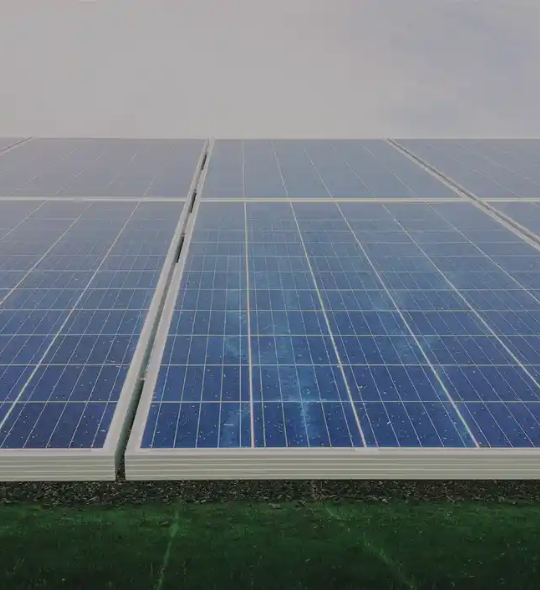
Ohio is pulling ahead in the solar race despite legislative hurdles and sunnier competitors
TL;DR
-
Ohio’s solar capacity on track to pass coal by 2028 and the state has the third-highest number of MW in the pipeline in America
-
Tech companies like Amazon driving demand for solar energy and investing in capacity in Ohio
-
Push for Made in America solar technology leading to manufacturing investment and cleantech jobs in Ohio
As the pandemic drags on, the light at the end of the tunnel for Ohio’s economy looks to be sunlight, as the state’s solar sector continues to rapidly grow. Not only is Ohio a leader in the number of solar projects in the pipeline for 2022-23, but the Buckeye State is also home to Made in America solar solutions.
Ohio now ranks third (behind Texas and California) nationally in terms of solar capacity in the pipeline over the next two years. Energy consultancy Wood Mackenzie also ranks Ohio as the top state in the Midwest for solar development over the next five years. Ohio now accounts for 8% of American planned solar projects, a meteoric rise considering the state’s first grid-scale solar facility — the 200MW Hillcrest Solar Array — was only commissioned in May 2021.
The death of coal accelerates as solar booms
Equally impressive has been Ohio’s transformation from coal country to solar state, with solar capacity set to surpass coal before 2029. Ohio only had a paltry 112MW of solar capacity in 2020, compared to 10,620MW worth of coal. To be fair, coal capacity is largely being replaced by natural gas, and the capacity factors (how much of said capacity is usable at any given moment) of coal and solar are very different. Nevertheless, the transition to less polluting fossil fuel sources combined with the rise in solar marks a two-front assault on Ohio’s emissions.
With coal increasingly uncompetitive, its share of generation will fall to under 5,800MW by 2028, with solar capacity leapfrogging to over 7,500MW. Ohio is also producing far less coal than just a decade ago, with production in 2021 (3.26 million tonnes) less than one-seventh that of 2010.
While this is good news for Ohio’s carbon footprint, there is still lingering resistance to renewables among some Ohioan politicians. The ongoing wrangling about the role of coal (not to mention the impact of the House Bill 6 scandal) in the state means there is still $1.8 billion in taxpayer subsidies set to flow to two coal plants through 2030.
Solar boosting manufacturing, enticing businesses to Ohio
Corporate responsibility, governance, and emissions reduction are more important than ever for US businesses. This means that states offering renewable generation can win out over other regions with more carbon-intensive grids. Technology giants like Microsoft, Google, Facebook, and Amazon are particularly aware of these risks, and they have been aggressively buying renewable energy to green their operations.
For example, Amazon plans to run entirely on green energy by 2025, and has been supporting the development of solar in Ohio to reduce its carbon footprint. Specifically, Amazon announced two new solar projects in Ohio in December 2021, bringing its total to 16 in the state: as of December 2021 Amazon uses or is building 2,286MW of solar energy capacity in Ohio alone.
Ohio now accounts for 8% of planned solar projects in America.
The importance of solar has been highlighted by the Biden administration’s Green New Deal and the need to increase domestic solar panel production is working to Ohio’s benefit. The United States went from producing 13% of the world’s solar panels in 2004 to less than 1% today, while China’s share has risen from less than 1% to 67% of global production, according to the National Renewable Energy Laboratory. Logistical and national security concerns are prompting more investment in American-made solar arrays.
A key player is First Solar, one of the few American companies competing in the Chinese-dominated solar panel sector. First Solar has a factory in Toledo, and the Buy American push has already seen its entire 2022 production run sell out. To meet demand, First Solar is building new factories in Ohio, a $680 million investment that doubles the size of its facility and will create over 700 jobs. These investments mean the company’s Toledo operation will be “[…] the largest integrated solar complex in the world outside of mainland China,” explains Mike Koralewski, head of manufacturing at First Solar.
Pace of cleantech adoption still not fast enough
Developments in Ohio’s solar sector are encouraging, as the state rapidly transitions from coal to renewables, and creating green jobs in the process. The state plans to eliminate emissions from electricity by 2035 and solar is already the fastest growing new electricity source in Ohio and the United States in general, but the White House says the pace of adoption needs to triple or quadruple to meet Washington’s 2035 decarbonization goal.
A key hurdle that is limiting the rate of cleantech adoption is accessing funding. Many projects never get off the ground due to difficulties securing enough upfront capital, or because companies don’t have the flexibility to adopt longer ROI horizons. With the help of Payments — our on-bill payments solution — EnPowered helps energy users use future energy savings to pay for cleantech solutions today.
With Payments, asset providers can unlock stalled projects, sell more, help their clients save, and reduce emissions at the same time. For more information, reach out today to learn how Payments can help your business unlock stalled projects and drive more sales.





